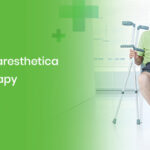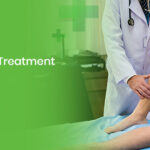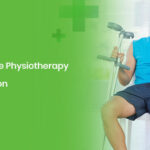Rotator cuff tears in the subacromial space due to:
- Trauma, and or
- Repeated micro-trauma.
Traumatic rotator cuff tears occur following a fall or lifting a heavyweight. However, the commoner form of rotator cuff tear is due to repeated micro-trauma, which occurs over several weeks months, or years. The rotator cuff tears may be partial or full-thickness tears.
The rotator cuff muscles can get injured under the subacromial space because of several causes ranging from weakness and or imbalance of shoulder muscles, fatigue, postural faults, repeated overhead activity, etc. These strained rotator cuff muscles are prone to tear when they are repeatedly used under pathological conditions.
Symptoms:
- Partial rotator cuff tears may present with mild shoulder pain, clicking during shoulder elevation and mild shoulder weakness lifting the hand above shoulder height or reaching behind the back.
- Full-thickness rotator cuff tear will normally present with severe Shoulder pain and an inability to lift the hand above shoulder height.
- Moderate tears are usually more painful and difficult in raising the arm. Most patients spend restless nights due to pain. With a large rotator cuff tear, patients are unable to lift the arm at all.
Diagnosis:
A severely painful shoulder with an inability to lift the hand overhead or does it with great difficulty with or without a history of trauma is most likely to be a case of full-thickness rotator cuff tear.
An MRI or Diagnostic Ultrasound Scan can be used to confirm the diagnosis. X-Ray is of little help when a rotator cuff tear is suspected.
Treatment of Rotator Cuff Tear.
Early rotator cuff tear treatment is of utmost importance, as small and medium-sized rotator cuff tears may develop into larger tears or eventually complete tears of the tendons. Complete or larger tears may require arthroscopic surgery.
Small and medium tears respond well with conservative management and Physiotherapy treatment when patients present early.
The ultimate aim of treatment should be to centralize the shoulder ball into its socket, which is the actual function of rotator cuff muscles. This will allow proper slides and glides of the shoulder ball in its socket while dynamically moving the arm over a stable shoulder blade. So it is also very important to ensure a dynamically stable shoulder blade.
The treatment progresses through the following stages to achieve the desired result.
- Early Injury Protection
- Regain Full Range of Motion
- Restore Scapular Control
- Restore Rotator Cuff Strength
- Restore strength, Power, and Proprioception
- Return to Sport/ Work
Get in touch with our expert at Physiotherapy in Dwarka, Delhi to understand your shoulder problem better.
Rotator Cuff Repair Surgery
The Rotator cuff repair through Arthroscopic surgery is recommended for full thickness and partial thickness tears that do not heal with Physiotherapy. Six to eight weeks of Physiotherapy is recommended by most orthopedic surgeons to reduce the post-operative physiotherapy duration. As in most cases, it may take 6-12 months of post-operative physiotherapy rehabilitation.
In rotator cuff repair surgery, the torn tendon ends are brought closer and stitched back together. The best results occur when the tear is fresh rather than an older tear.
One should follow the surgeon’s post-operative guidelines for the best outcome.





